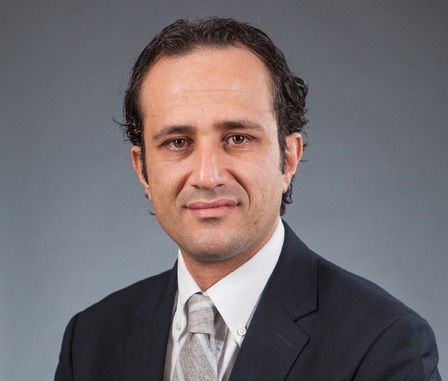
By Angela Gonzalez
Speaking at the 2015 American College of Cardiology Annual Scientific Session (14–16 March, San Diego, USA), Luigi Di Biase (Texas Cardiac Arrhythmia Institute at St Davids Medical Center, Austin Texas, USA and Section Head of Electrophysiology, Albert Einstein and Montefiore Hospital, New York, USA) reported that-compared with the antiarrhythmic drug amiodarone-catheter ablation significantly increases the rate of freedom of recurrence in patients with persistent atrial fibrillation and heart failure.
Di Biase stated that atrial fibrillation and heart failure “frequently coexist”, noting that the prevalence of atrial fibrillation increases with heart failure severity “ranging from 5% in patients with New York Heart Association (NYHA) class I to approximately 50% in patients with class IV heart failure.” He added: “The prevalence of heart failure in patients with atrial fibrillation has been estimated at 42%. The combination of heart failure and atrial fibrillation leads to deleterious haemodynamic and symptomatic consequences.”
According to Di Biase, randomised controlled trials indicate ablation to be superior to antiarrhythmic drugs in restoring sinus rhythm in patients with atrial fibrillation regardless of whether they have also have heart failure. Furthermore, while catheter ablation is known as a “valid treatment option” for patients with drug-refractory atrial fibrillation, the majority of trials of catheter ablation have “mainly enrolled patients with preserved left ventricular systolic function and paroxysmal atrial fibrillation”. Therefore, he explained, the aim of the AATAC-AF in Heart Failure (Ablation vs. amiodarone for treatment of atrial fibrillation in patients with congestive heart failure and an implanted ICD/CRTD) study was to compare catheter ablation with amiodarone in patients with persistent atrial fibrillation and heart failure.
Patients were enrolled in the study if they had persistent atrial fibrillation, NYHA class II–III heart failure, a dual chamber implantable cardioverter defibrillator (ICD) or a cardiac resynchronisation therapy with defibrillator (CRT-D) device, and left ventricular ejection fraction of ≤40%. Of the 203 patients enrolled, 102 were randomised to undergo catheter ablation and 101 were randomised to receive amiodarone. The primary endpoint was freedom from recurrence of atrial fibrillation. Di Biase and his co-investigators also reviewed all-cause mortality, cardiac-related hospitalisation, change in left ventricular ejection fraction, six-minute walk distance, and quality of life as assessed by the Minnesota Living with Heart Failure questionnaire (MLHFQ) at the 24-month follow-up point.
At 24 months, significantly more patients in the ablation group were free from a recurrence of atrial fibrillation than those in the amiodarone group: 70% vs. 34%, respectively; p
However, a subanalysis of the study suggested that if catheter ablation was limited to isolation of the pulmonary vein alone, the freedom from recurrence rate was reduced “almost to the level of amiodarone treatment”. Di Biase explained that the rate of freedom of recurrence was 36.4% in patients who just received pulmonary vein isolation compared with 78.8% for those who received pulmonary vein isolation plus ablation in other areas (p<0.001).
Furthermore, over the two-year period, both the rate of hospitalisation (31% vs. 57%; p<0.001) and the rate of all-cause mortality (8% vs. 18%; p=0.037) was significantly lower in patients undergoing ablation compared with those receiving amiodarone. In a separate analysis, freedom from recurrence was also associated with better outcomes than recurrence-with patients who did not have a recurrence having significant improvements in left ventricular ejection fraction, the six-minute walk test, and the MLHFQ score.
Di Biase concluded: “This multcentre randomised study shows that catheter ablation of persistent atrial fibrillation is superior to amiodarone in achieving freedom from atrial fibrillation at long-term follow-up and reducing hospitalisation and mortality in patients with heart failure.” He added: “The potential for socioeconomic repercussions of these results will require further investigation.”












